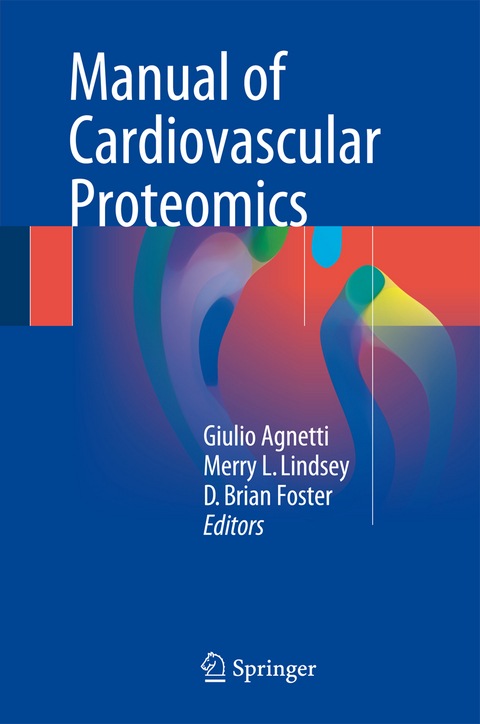
Manual of Cardiovascular Proteomics
Springer International Publishing (Verlag)
978-3-319-31826-4 (ISBN)
As this technique and its applications have undergone remarkable advances in the past years, recent updates on proteomic applications are covered. Another key concept revealed by proteomic technologies is that the extent of protein post-translational modifications (PTMs) as well as their impact on the phenotype has been underestimated by pre-proteomics science. As such, part of the manual focuses on the emerging role of PTMs in basic cardiovascular sciences andin the clinics.
In fact, there is an emerging consensus that the detailed annotation of protein PTMs could lead to a more in-depth representation of biological systems, translating into more specific targets for therapy as well as biomarkers. Moreover, a recent trend is so-called "targeted proteomics". The approach was awarded the title of "Method of the Year" by Nature in 2013 (see the editorial by Vivien Marx in 1st issue of Nature in Jan 2013). According to a few proteomic scientists the emphasis should not be placed on generating long lists of proteins but lists of proteins with a true biological meaning.
Giulio Agnetti, PhD is an Assistant Professor of Medicine in the Division of Cardiology at Johns Hopkins University. His research over the past 15 years have focused on the clarification of the molecular mechanisms driving the transition from cardiac hypertrophy to heart failure (HF) utilizing proteomic technologies. Merry Lindsey, PhD is a Professor of Physiology and Medicine and Director of the Mississippi Center for Heart Research at University of Mississippi. She is working extensively in the field of matrix remodeling and cardiac proteomics. Particular interests include inflammatory and fibrotic mechanisms in the pathogenesis of left ventricular remodeling following myocardial infarction, and cardiac aging. D. Brian Foster, PhD is an Assistant Professor of Medicine in the Division of Cardiology and Director of the Laboratory of Cardiovascular Biochemistry at The Johns Hopkins University School of Medicine. His lab uses the tools of protein biochemistry and proteomics to tackle fundamental problems in cardiac preconditioning, cardiomyopathy and heart failure.
Introduction: why proteomic is important to you and the broad scientific community.- State-of-the-Art in Cardiac Proteomics.- Pitfalls to be avoided in experimental design.- Proteomic workflow: one size does not fit all.- Bottom-up Proteomics.- Top-Down Proteomics.- Targeted Proteomics.- Data Analysis and Data Mining.- Post-translational Modifications in the Cardiac Proteome.- Taylored Approaches to Study Post-translational Modifications.- Concluding Remarks: Proteomics AD 2025.
| Erscheinungsdatum | 22.07.2016 |
|---|---|
| Zusatzinfo | XVI, 430 p. 65 illus., 58 illus. in color. |
| Verlagsort | Cham |
| Sprache | englisch |
| Maße | 155 x 235 mm |
| Themenwelt | Medizinische Fachgebiete ► Innere Medizin ► Kardiologie / Angiologie |
| Schlagworte | Cardiology • Heart disease • Mass Spectrometry • Medicine • Post-translational modifications • Proteomics • Translational Medicine |
| ISBN-10 | 3-319-31826-8 / 3319318268 |
| ISBN-13 | 978-3-319-31826-4 / 9783319318264 |
| Zustand | Neuware |
| Haben Sie eine Frage zum Produkt? |
aus dem Bereich


